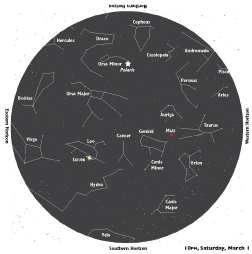Hold on for the Quickening
As daylight hours grow, the land reawakens
With the growing hours of sunlight each day, we’re in the final throes of winter. Just in the past month we’ve gained more than a half-hour of daylight in the evenings, and that continues with an additional 90 seconds gained each day! Not so fast is the departing gloom of morning, but even so, the sun rises more than 10 minutes earlier than it did a month ago.
Sunrise this week comes around 6:40, and sunset falls already after 6:00. Over the next week, those times will stretch, with sunrise 11 minutes earlier and sunset seven minutes later.
Not only is our daylight each day increasing. So, too, is the very life around us, as the earliest spring flowers break through the cold soil, seeking the warmth of the sun, and animals give birth.
Long ago, the Celts of pre-Christian western Europe called this time of year the quickening. To them, all objects of Earth — not just creatures, but trees, stones and the ground itself — were alive, all sharing the same “sap” of life. With the quickening come the growing signs of the changing season, and the sap of life again begins to flow in all creatures, leading to spring’s reawakening of the land.
Up and away from Earth, all five naked-eye planets are visible this week. Mars appears high in the south-southwest at sunset. Saturn shines low in the east at sunset and is in the south come midnight. Jupiter rises after 3am and shines low in the southeast as dawn nears. Mercury rises in the southeast before 6am, followed closely by brilliant Venus, very low but many times brighter.
Tidelog®
Illustration: © Copyright 1925 M.C. Escher/Cordon Art-Baarn-Holland; Graphics: © Copyright 2007 Pacific Publishers. Reprinted by permission from the Tidelog graphic almanac. Bound copies of the annual Tidelog for Chesapeake Bay are $14.95 ppd. from Pacific Publishers, Box 480, Bolinas, CA 94924. Phone 415-868-2909. Weather affects tides. This information is believed to be reliable but no guarantee of accuracy is made by Bay Weekly or Pacific Publishers. The actual layout of Tidelog differs from that used in Bay Weekly. Tidelog graphics are repositioned to reflect Bay Weekly’s distribution cycle.Tides are based on National Oceanic and Atmospheric Administration and are positioned to coincide with high and low tides of Tidelog.
